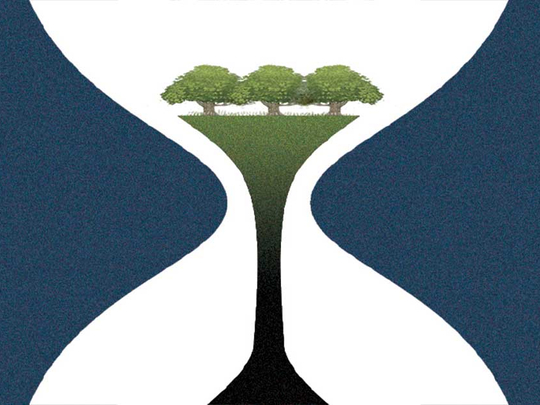
The leaders of almost all nations on earth are meeting in Paris until December 10 to try to agree on a set of decisions that will reign in the growing effects of climate change. Much is at stake and unless brave decisions are made, the problem will only continue to grow in alarming fashion. Indeed, 2015 is going to be the hottest year on record, breaking the previous highest global temperature, which was set in 2014. More noticeable are the extreme weather phenomena (droughts, hurricanes and other) that seem to have increased in frequency and in geographic distribution lately. For instance, when was the last time Yemen was hit by two hurricanes within a couple of weeks?
But before we consider the brave decisions the big conference in Paris is supposed to take, let me briefly review what the world’s nations and organisations have done on the problem in recent times.
COP21 stands for ‘21st Conference of the Parties’, that is the 21st meeting of the heads of states representing an executive committee of the United Nations Climate Change Convention that came out of the Rio Earth Summit in 1992. In Rio, not only was climate change proclaimed a serious and urgent global problem, but significantly, the developed countries accepted their ‘historical responsibility’ for the current state of affairs, having been producing greenhouse gases since the Industrial Revolution. Many have since reneged this ‘historical responsibility’, and this has become a major point of contention.
Each year, the leaders of the world (or their representatives) meet to review the state of progress on the agreements on climate change that have come out. The most famous such agreement is the 1997 Kyoto Protocol from COP3, where the 55 industrial countries that produced (then) 55 per cent of carbon dioxide emissions were supposed to reduce their production of greenhouse gases by at least 5 per cent within 10-15 years. Unfortunately, the protocol failed, as the United States refused to ratify it, Canada and Russia withdrew from it and China, which has since become the top producer of greenhouse gases, was not involved then.
In 2009, COP15 was held in Copenhagen, and like COP21 in Paris this year, it involved all countries of the world and attempted to produce a truly global and ambitious agreement, to replace the Kyoto Protocol and effectively bring climate change to ‘acceptable’ levels. There have been some disagreements on what levels can be deemed ‘acceptable’, most representatives agreeing to a 2-degree increase in the earth’s global temperature compared to pre-industrial eras. Others (particularly countries that will be most directly affected by the problem) wanting a lower level of 1.5 degrees Celsius. Copenhagen failed to produce an international agreement and in the following yearly meetings, leaders set Paris 2015 as the next big date to come up — at last — with an agreement. So here we are.
What can we expect, then?
First, as in all big international meetings, while the leaders will be busy trying to negotiate last-minute details, the general document has been worked out, with more than 150 countries having already sent in their “contributions”, that is what they will sign up for. The European Union, for example, is promising to reduce its gas emissions by 40 per cent compared to their 1990 levels. The US aims to cut down by 26-28 per cent within ten years, compared to the 2005 levels. Most importantly, we await the promises made by China, India, Russia and Indonesia, which make up four of the five biggest emitters of greenhouse gases (China and the US representing almost half of the world’s production).
Some of the promises that have been announced (cuts by 30 or 40 per cent) may seem ambitious, but experts have already warned that the expected results of all the “contributions” may lead to a warming by about 3 degrees — far from the 2-degree target, let alone the 1.5 degree level that some states have demanded. This is worrisome. With such increases, some countries will be devastated by droughts or floods or storms, while others will actually benefit from slightly more rain.
The climate-change debates have often been a dialogue of the deaf: Some commentators, particularly the social and political activists, discuss it in moral terms; economists and policymakers discuss it in terms of costs; while experts discuss it in terms of science and technology.
The moral approach insists that we have a duty towards future generations to fix a problem that we have produced and not bicker over who is more or less responsible and what level is ‘acceptable’. The economic viewpoint is that anything we do must be viewed through a cost-benefit analysis: We must not go for a solution that today will cost/hurt us much more than it will help future generations tomorrow. The science and technology approach consists in mobilising brains and resources to find the best solution that will solve the problem radically instead of the torturous “contributions” that each country “promises” to make. Now is the time to be bold and visionary, some serious thinkers say.
It will be hugely interesting to see what agreement comes out of COP21 and how it will be implemented in the future. We are indeed at a turning point in humanity’s history.
Nidhal Guessoum is a professor of Physics and Astronomy at the American University of Sharjah. You can follow him on Twitter at www.twitter.com/@NidhalGuessoum










